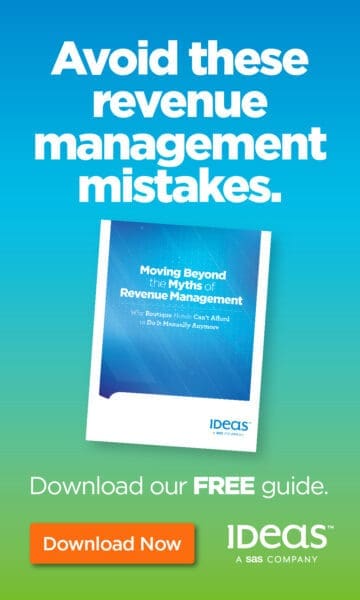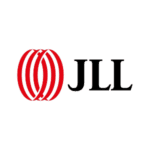
The hospitality industry, like many others, has experienced big changes because of technology. Technological development has forever altered the landscape of hotel management and guest experiences. As time keeps passing and new technologies arise, it is clear that a well-designed hotel tech stack is very important for hoteliers to remain competitive in the market.
Yet in today’s world, we’re constantly bombarded with emerging trends, creative ideas from our competitors, guides and instructions on how to do things, and more.
There are so many options available when it comes to technology. Don’t worry, we’ve got you covered! In this article, we will explain in detail how to build a helpful and scalable hotel tech stack, enabling hoteliers to stay at the forefront of innovation.
The Importance of Adopting Technology
With modern travellers expecting more seamless experiences and personalised services, adopting a well-designed tech stack has become essential.
It can not only help in enhancing guest satisfaction, but also significantly improving employee experience. Many hotels are now dealing with staff shortages, and having the right technology to automate repetitive routine tasks frees up staff’s time and enables them to engage with guests more. If the staff is happy, it can greatly impact the guest experience.
Moreover, with everyone talking about being eco-friendly and reducing our impact on the environment, technology also provides solutions that support these important needs.
Building your Hotel Tech Stack Step by Step
Step 1: Analyse your needs
Before integrating new technologies, it’s crucial to conduct a comprehensive assessment. This involves understanding your hotel’s current pain points, operational inefficiencies, and the unique demands of your target market, which will guide your technology choices.
Always remember to ask your staff for their input. After all, they are a key piece in making your property work and have clear ideas on what is taking most of their time and adding less value. They can identify the most challenging aspects of their work and provide suggestions for improvements.
Questions like “what is the most difficult part of your work?”, “which tasks take most of your time?”, “what do you think is important to the company?”, can help you to get more insights on where the improvements need to be made.
Survey your staff about where they perceive a need for changes, as they are the ones who will be using the new technology on a daily basis.
This will help you to get an overview of what is needed.
Step 2: Analyse your goals
Once the interviews are over, you also need to consider your goals. What are you planning to achieve for the next year? What didn’t work during this year? What are the main objectives?
If you understand where you want to be in a certain period, you can start building the path to get there.
Step 3: Conduct Thorough Research
This stage involves exploring available options, researching features, benefits, and costs. Once you get an idea of what you need and what are your goals, it is time to talk to vendors.
Don’t be afraid to talk to them, request demos, seek advice from industry experts, peers and references. Gather as much information as you can to ensure a wise choice.
The first part has to do with considering certain options and getting to know each vendor. Then, you can compare them based on features, reputation, price and other aspects that are important.
Step 4: Think about integrations
One crucial aspect to consider is how each vendor can integrate with the technology you already have in place.
Integration is a crucial aspect of a hotel tech stack. Each platform should integrate at least with your property management system, but if you manage to get platforms that are also integrated with each other (for example, a PMS connected to a CRM and to a mobile key provider), then you will be able to make the most out of connectivity.
Step 5: Think about scalability and flexibility
Think big from the beginning. In the hotel business, it’s important to be able to quickly adjust to market developments and changing guest expectations. Opting for scalable and flexible solutions is a necessity.
Your tech stack should not only satisfy current needs but also have the capacity to grow and adapt as your hotel does. Additionally, consider the ease of integrating additional features or linking with other platforms in the future.
Step 6: Think about security and compliance
Cybersecurity cannot be understated. With hotels increasingly becoming targets for data breaches due to the vast amount of personal guest data they handle, strong security measures are a must-have. Complying with global standards such as the General Data Protection Regulation (GDPR) is also critical to protect your business from legal liabilities.
Step 7: Implement, regularly review and update
Finally, after settling on your chosen systems, run a few tests before completely implementing them. Concurrently, ensure your staff is well-trained and comfortable with the new software. This can significantly ease the transition phase.
The world of technology is rapidly evolving. So you might want to regularly review your tech stack and make improvements and additions where necessary. Staying aware of technological advancements in the hospitality industry can afford you substantial competitive advantages.
Three Must-have Softwares for Your Hotel Tech Stack
Now that you’re familiar with the steps to build an efficient hotel tech stack, you may wonder what are the essentials to start with. Here are three must-have software solutions to enhance your hotel business.
Property Management System (PMS)
Your PMS is the heartbeat of your hotel tech stack. This system manages bookings, facilitates check-ins/check-outs, oversees guest profiles, billing, and streamlines other administrative tasks. When choosing a PMS for your tech stack, consider its ease-of-use, integrations, customizability, and technical support.
Customer Relationship Management (CRM) Software
Built to assist with your guest communication and your guest data, a hotel CRM manages customer data and helps you to take care of your marketing operations, using personalisation and automation.
Nowadays, guest data is more important than ever! You need a clean and organised database that’s up-to-date. Based on guest data, you can segment your guests by demographics, past purchasing behaviours, and preferences. It is the key to personalization.
A multi-channel CRM helps you to build a complete guest journey from pre-stay to post-stay with unique touch points. It allows you to send personalised campaigns based on accurate data, ensuring you are sending the right message at the right time via guests’ preferred channel. What’s more, it even enables you to reach OTA bookers.
Revenue Management System (RMS)
Revenue management is the science of selling the right room to the right customer at the right time for the right price. An RMS leverages data analytics to help hoteliers understand demand and optimise pricing. It allows for a more strategic, dynamic pricing strategy that will maximise profits.
Will Technology Ever Take Over Human Touch?
One of the biggest misconceptions about technology is that it is impersonal and robotic, just like a machine without any humanity. However, with the right technology implemented, it can actually empower employees and enhance the human touch.
Apart from preventing the likelihood of human mistakes, employees no longer need to spend a long time working on repetitive tasks. By streamlining your operations and automating unnecessary tasks, now they have more time to plan and have the opportunity to engage closely with guests.
When technology provides conveniences and predicts guests’ preferences accurately, employees are able to personalise the offers and customise their entire stay, creating a truly unforgettable experience. Therefore, the relationship between technology and human touch is less a battle and more a harmonious dance.
Learn more about how automation can help save time on your property in this article.
Conclusion
Building a hotel tech stack is a complicated process involving carefully evaluating your needs, conducting in-depth research, and ensuring integration efficiency, scalability, and regular updates. Keep in mind that the goal is to enhance hotel operations, boost guest satisfaction, and ultimately, drive growth and success. Welcome to 2024, dear hoteliers, where a well-structured tech stack is the cornerstone of a thriving hotel! Isn’t it time you began following our tips and creating one that will keep bringing your guests back?
































